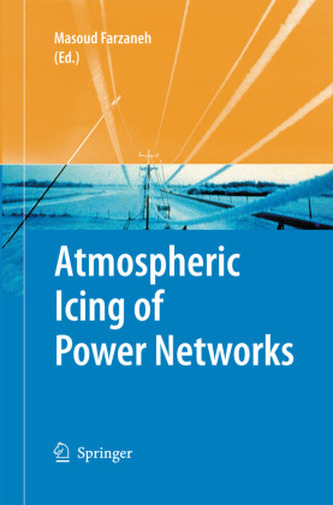Foreword.\n1. Modern Meteorology and Atmospheric Icing; Svein M. Fikke et al. 1.1 Introduction. 1.2 Atmospheric Icing - A Brief Survey of Icing Processes and their Meteorological Aspects. 1.3 Icing Models. 1.4 Introduction of Numerical Weather. Prediction Models. 1.5 Some Preliminary Applications of Fine-Scale Models. 1.6 Condensation Schemes in NWP Models - Relevance for Icing Prediction. 1.7 A Case Study: Using Numerical Weather Prediction Models to Forecast In-cloud Atmospheric Icing. Episodes. 1.8 Concluding Comments.\n2. Statistical Analysis of Icing Event Data for Transmission Line Design Purposes; Masoud Farzaneh and Konstantin Savadjiev. 2.1 Introduction. 2.2 Measurements and Database. 2.3 Statistical Analysis and Modelling Ice Loads on Overhead Transmission Lines. 2.4 Conclusions.\n3. Numerical Modelling of Icing on Power Network Equipment; Lasse Makkonen, Edward P. Lozowsk. 3.1 Introduction. 3.2 The Fundamental Equation of Icing. 3.3 Computing the Rate of Icing. 3.4 Numerical Modelling. 3.5 Conclusions.\n4. Wet Snow Accretion on Overhead Lines; Pierre Admirat. 4.1 Introduction. 4.2 Microphysics of Wet Snow. 4.3 Thermodynamic Analysis of Heat Exchanges. 4.4 Modelling the Cylindrical Growth of Wet Snow Sleeves. 4.5 Simulation of Accretion Mechanisms in Wind Tunnel Conditions. 4.6 Observation of Accretion Mechanisms in Natural Climatic Conditions. 4.7 Applications to Forecasting, Preventing, and Mapping the Wet Snow Overload Hazard.\n5. Effect of Ice and Snow on the Dynamics of Transmission Line Conductors; Pierre Van Dyke et al. 5.1 Introduction. 5.2 Aeolian Vibrations. 5.3 Wake-induced Oscillation. 5.4 Galloping Conductors. 5.5 Protection Methods. 5.6 Galloping Amplitudes. 5.7 Ice Shedding. 5.8 Bundle Rolling. 5.9 Conclusion.\n6. Anti-icing and De-icing Techniques for Overhead Lines; Masoud Farzaneh et al. 6.1 Introduction. 6.2 Anti-icing Techniques. 6.3 De-icing Techniques. 6.4 Joule-Effect Methods. 6.5 Methods for Limiting IceAccretion Weight. 6.6 Practical Aspects. 6.7 New Developments in Anti-icing Methods. 6.8 Conclusions.\n7. Effects of Ice and Snow on the Electrical Performance of Power Network Insulators; Masoud Farzaneh, William A. Chishol. 7.1 Introduction. 7.2 Insulator Functions, Dimensions and Materials. 7.3 Ice and Snow Accretion on Insulators. 7.4 Ice Flashover Processes and Mechanisms. 7.5 Cold-Fog Flashover Process and Mechanisms. 7.6 Snow Flashover Process and Mechanisms. 7.7 Mathematical Modelling of Flashovers on Insulators Covered with Ice or Snow. 7.8 Recommended Test Methods. 7.9 Insulation Coordination for Ice and Snow Conditions. 7.10 Mitigation Options to Improve Network Reliability in Winter Flashover Conditions. 7.11 Conclusions and Recommendations.\n8. Design of Transmission Lines for Atmospheric Icing; Anand Goel. 8.1 Introduction. 8.2 Types of Atmospheric Icing Accretion. 8.3 Ice Accretion on Overhead Line Conductors and Structures. 8.4 Ice Load Measurements. 8.5 Standards for Ice Loads. 8.6 Transmission Line System. 8.7 Design Methodology. 8.8 Deterministic Design Approach. 8.9 Reliability-based Design (RBD) Approach. 8.10 Return Period. 8.11 Variability of Component Resistance. 8.12 Other Loads. 8.13 Ice/Snow Accretion Mitigation Techniques. 8.14 Lessons from the 1998 Ice Storm. 8.15 Concluding Remarks.\nAppendix 8.A.\nIndex.
\n ukryj opis- Wydawnictwo: Springer Netherlands
- Kod:
- Rok wydania: 2014
- Język: Angielski
- Oprawa: Miękka
- Liczba stron: 381
- Szerokość opakowania: 15.5 cm
- Wysokość opakowania: 23.5 cm


 Kontakt
Kontakt
 Konto
Konto
















Recenzja